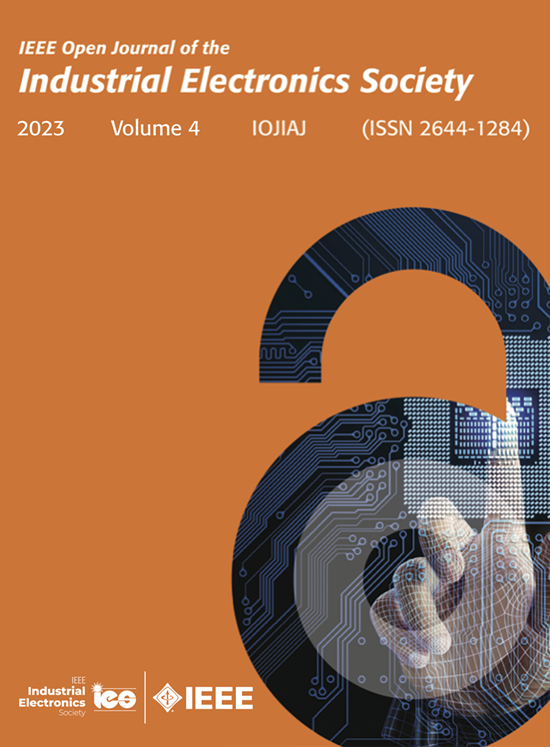Auto-SGCR: Automated Generation of Smart Grid Cyber Range Using IEC 61850 Standard Models
IF 4.3
Q1 ENGINEERING, ELECTRICAL & ELECTRONIC
IEEE Open Journal of the Industrial Electronics Society
Pub Date : 2025-09-01
DOI:10.1109/OJIES.2025.3604576
引用次数: 0
Abstract
Digitalization of power grids have made them increasingly susceptible to cyber-attacks in the past decade. Iterative cybersecurity testing (i.e., red-team testing or penetration testing) is indispensable to counter emerging attack vectors and to ensure dependability of critical infrastructure. Furthermore, these can be used to evaluate cybersecurity configuration, effectiveness of the cybersecurity measures against various attack vectors, and to train smart grid cybersecurity experts defending the system. Facilitating extensive experiments narrows the gap between academic research and production environment. A high-fidelity cyber range (a virtual cybersecurity testbed emulating smart grid systems) is vital as it is often infeasible to conduct such experiments and training using production environment. However, the design and implementation of cyber range requires extensive domain knowledge of physical and cyber aspect of the infrastructure. Furthermore, costs incurred for setup and maintenance of cyber range are significant. Moreover, most existing smart grid cyber ranges are designed as a one-off, proprietary system, and are limited in terms of configurability, accessibility, portability, and reproducibility. To address these challenges, an automated smart grid cyber range generation framework (Auto-SGCR) is presented in this article. Initially a human-/machine-friendly, XML-based modeling language called smart grid modeling language (SG-ML) was defined, which incorporates IEC 61850 system configuration language files. Subsequently, a tool chain to parse SG-ML model files and automatically instantiate a functional smart grid cyber range was developed. The developed SG-ML models can be easily shared and/or modified to reproduce or customize for any cyber range. The application of Auto-SGCR is demonstrated through case studies with large-scale substation models. The toolchain along with example SG-ML models have been open-sourced.Auto-SGCR:使用IEC 61850标准模型自动生成智能电网网络范围
在过去十年中,电网的数字化使其越来越容易受到网络攻击。迭代的网络安全测试(即红队测试或渗透测试)对于对抗新出现的攻击媒介和确保关键基础设施的可靠性是必不可少的。此外,这些可用于评估网络安全配置,针对各种攻击向量的网络安全措施的有效性,并培训保护系统的智能电网网络安全专家。促进广泛的实验,缩小了学术研究和生产环境之间的差距。高保真网络范围(模拟智能电网系统的虚拟网络安全测试平台)至关重要,因为使用生产环境进行此类实验和培训通常是不可行的。然而,网络范围的设计和实施需要基础设施的物理和网络方面的广泛领域知识。此外,建立和维护网络范围所产生的成本是显著的。此外,大多数现有的智能电网网络范围被设计为一次性的专有系统,并且在可配置性、可访问性、可移植性和可重复性方面受到限制。为了应对这些挑战,本文提出了一个自动化智能电网网络范围生成框架(Auto-SGCR)。最初定义了一种对人/机器友好的、基于xml的建模语言,称为智能电网建模语言(SG-ML),它包含了IEC 61850系统配置语言文件。随后,开发了一个工具链来解析SG-ML模型文件并自动实例化功能智能电网网络范围。开发的SG-ML模型可以很容易地共享和/或修改,以复制或定制任何网络范围。通过大型变电站模型的实例研究,展示了Auto-SGCR的应用。工具链和示例SG-ML模型都是开源的。
本文章由计算机程序翻译,如有差异,请以英文原文为准。
求助全文
约1分钟内获得全文
求助全文
来源期刊

IEEE Open Journal of the Industrial Electronics Society
ENGINEERING, ELECTRICAL & ELECTRONIC-
CiteScore
10.80
自引率
2.40%
发文量
33
审稿时长
12 weeks
期刊介绍:
The IEEE Open Journal of the Industrial Electronics Society is dedicated to advancing information-intensive, knowledge-based automation, and digitalization, aiming to enhance various industrial and infrastructural ecosystems including energy, mobility, health, and home/building infrastructure. Encompassing a range of techniques leveraging data and information acquisition, analysis, manipulation, and distribution, the journal strives to achieve greater flexibility, efficiency, effectiveness, reliability, and security within digitalized and networked environments.
Our scope provides a platform for discourse and dissemination of the latest developments in numerous research and innovation areas. These include electrical components and systems, smart grids, industrial cyber-physical systems, motion control, robotics and mechatronics, sensors and actuators, factory and building communication and automation, industrial digitalization, flexible and reconfigurable manufacturing, assistant systems, industrial applications of artificial intelligence and data science, as well as the implementation of machine learning, artificial neural networks, and fuzzy logic. Additionally, we explore human factors in digitalized and networked ecosystems. Join us in exploring and shaping the future of industrial electronics and digitalization.
 求助内容:
求助内容: 应助结果提醒方式:
应助结果提醒方式:


